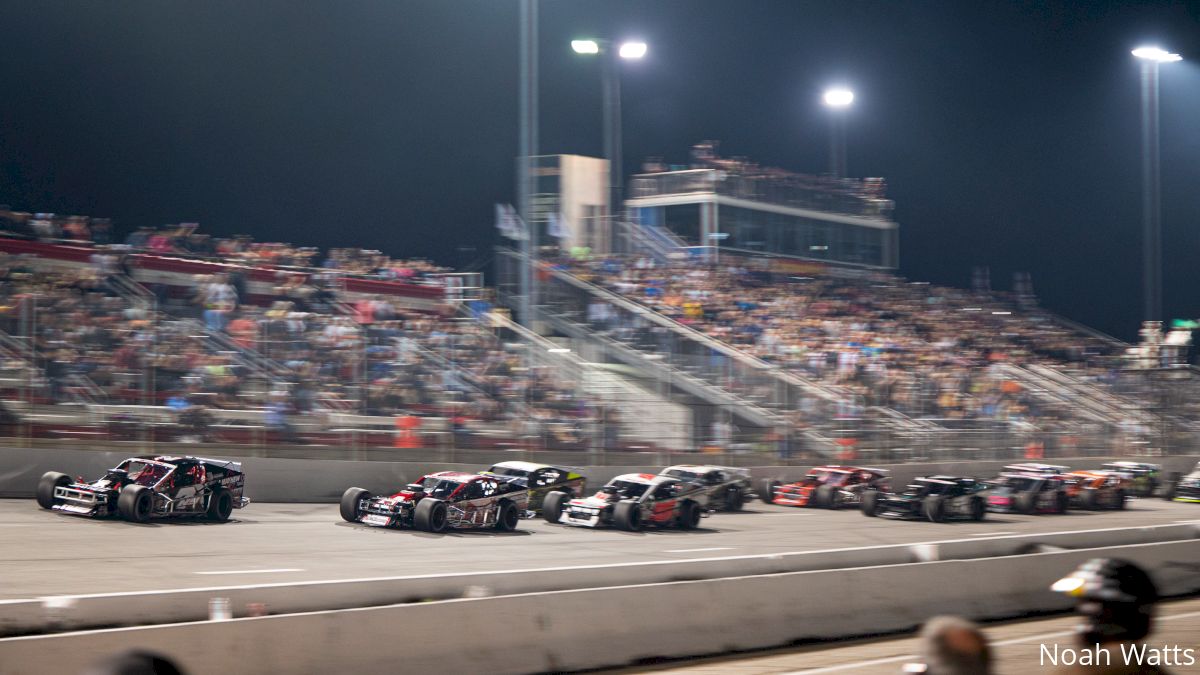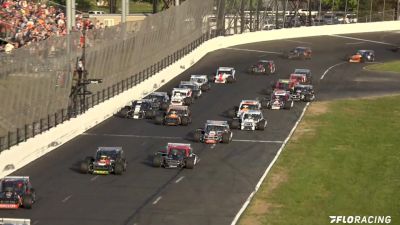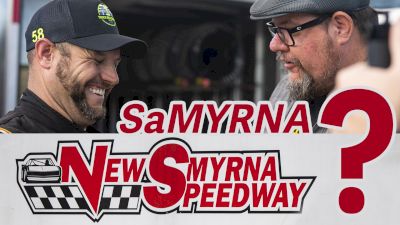What Are The Biggest Pavement Short Track Races?
What Are The Biggest Pavement Short Track Races?
There's plenty of big events in the pavement short track racing world, but what are the biggest of those events each year?

If you’re just getting into pavement short track racing and you’ve been wondering what races are the biggest ones each year, well you’ve come to the right place. In this list we’ll look at some of the biggest pavement short track races out there and break down what makes them so big.
What Are The Biggest Sprint Car Races?
What Types Of Cars Are Used For NASCAR Racing?
Snowball Derby at Five Flags Speedway
The Snowball Derby is hands-down the biggest race in the pavement short track world. Held every year on the first weekend of December in Pensacola, Florida at Five Flags Speedway, the Snowball Derby sees all of the big names in Super Late Model racing, and many big names from the NASCAR world as well.
The Derby pays well, too, with the winner taking home more than $30,000, but the money isn’t the reason why everyone makes the trip down to Pensacola each December. They all come for a chance to get their name placed on the legendary Tom Dawson Trophy, as winner of the Snowball Derby. Kyle Busch, Erik Jones, Darrell Waltrip, Chase Elliott, Donnie Allison, Gary St. Amant, and Gary Balough are just some of the big names that have won the Snowball Derby throughout its 55-year history.
Spring Sizzler at Stafford Motor Speedway
Nicknamed the “Greatest Race in the History of Spring” is the Spring Sizzler at Stafford Motor Speedway. The Spring Sizzler is a Modified race held every year since 1972 at the flat half-mile oval in Stafford Springs, Connecticut.
This year Ron Silk took the victory, drank the winner’s milk, wore the winner’s wreath, and took home a nice $35,050 check. The actual winner’s share for the race is $20,000, one of the highest-paying Modified races out there, but Silk also scored $11,500 in lap bonus money, plus $3,500 for winning his qualifying race.
Names like Ryan Preece, Matt Hirschman, Doug Coby, Woody Pitkat, Maynard Troyer, Richie Evans, and Reggie Ruggiero just to name a few are all winners of the Greatest Race in the History of Spring.

- Auto
VIDEO: Highlights from the 2023 Spring Sizzler at Stafford Motor Speedway.
Winchester 400 at Winchester Speedway
The Winchester 400 may not pay the most, and it may not bring the most cars to the track, but winning the Winchester 400 is one of short track racing’s biggest accomplishments. Held every October, the Winchester 400 takes place at the legendary Winchester Speedway, a half-mile track in Indiana with harrowing 37-degree banking in the corners. Racing at Winchester in any car is not for the faint of heart.
The winner gets to take home a beautiful Winchester rifle, and much like the Snowball Derby, some of the biggest names in racing have won it. Names like Rusty Wallace, Mark Martin, Bob Senneker, Butch Miller, Erik Jones, Chase Elliott, Kyle Busch, and Gary St. Amant have all gone to victory lane at the historic Winchester Speedway.
ValleyStar Credit Union 300 (Martinsville 300) at Martinsville Speedway
The race now known as the ValleyStar Credit Union 300 is the biggest race of the year for the Late Model Stock Car discipline, a type of Late Model that primarily races in the Carolinas and Virginia.
The race is held in the fall of each year at the historic half-mile of mayhem known as Martinsville Speedway. While the race pays more than $30,000 to the winner, this is one of those races where nobody cares about the paycheck. They’re all after that famous Grandfather Clock that Martinsville gives to the winner of every race there. For Late Model Stock Car drivers, Martinsville is their Daytona 500, and the Grandfather Clock is their Harley J. Earl trophy.
Peyton Sellers, Lee Pulliam, Josh Berry, Philip Morris, Dennis Setzer, Mike Skinner, and Barry Beggarly are just a few of the drivers that have taken home a Grandfather Clock since this race began in 1985.

- Auto
VIDEO: For Late Model Stock Car racers, a Martinsville grandfather clock is the ultimate prize.
All American 400 at Nashville Fairgrounds Speedway
The Nashville Fairgrounds Speedway is one of the most historic race tracks in all of America. The high-banked 5/8-mile oval has hosted the All American 400 since 1981, and the race has taken on many iterations since then. It started as an All Pro Super Series/ASA race with Super Late Models, then became a NASCAR Southeast Series race, then for a time it became a Pro Late Model race, but for the last few years it’s been contested as a Super Late Model race once again.
The winner of the All American 400 gets to strum a few chords from their new, one-of-a-kind custom-made acoustic guitar, which is one of the most unique trophies in all of racing.
Drivers that have taken home one of those guitars from the All American 400 include Darrell Waltrip, Rusty Wallace, Gary St. Amant, Chase Elliott, Bubba Pollard, among many more.
World Series of Asphalt Stock Car Racing at New Smyrna Speedway
The World Series at New Smyrna Speedway is one of the biggest events in pavement racing, made up of many races across many different divisions, making it quite different from the rest of the events on this list.
Instead of it being a multi-day event culminating in one big race at the end, the World Series is its own mini-season. Racers from all over North America come to New Smyrna Beach, Florida to kick off their racing season each year with nine nights of racing as part of Florida Speedweeks.
The ASA Southern Super Series and NASCAR Whelen Modified Tour have races during the World Series. Super Late Models, Pro Late Models, Modifieds, all take part in the World Series, as do numerous local divisions too.
The World Series is grueling for all involved, but it’s one of the most special events on a racer’s calendar each year.

- Auto
VIDEO: A deep dive into the correct way to pronounce New Smyrna Speedway.
Little 500 at Anderson Speedway
The Little 500 at Indiana’s Anderson Speedway is one of the most unique events in all of short track racing. 33 pavement Sprint Cars are packed into a tight, high-banked quarter-mile bullring just north of the Indianapolis Motor Speedway, and they race for 500 laps too.
It’s the ultimate test of man and machine, and one of the few of those tests left in racing anywhere. It’s quite often that more than half the field falls out of the race before it reaches its scheduled distance. It’s also quite often that just a handful of cars are left on the lead lap at the end of 500 circuits as well.
The Little 500 never fails to bring a capacity crowd to Anderson Speedway, because much like the Indianapolis 500 the next afternoon, the Little 500 is one of the greatest spectacles in racing too.
Where else do you get to see 33 Sprint Cars start three-by-three and race for 500 laps with live pit stops? Nowhere but Anderson Speedway in May.
Oxford 250 at Oxford Plains Speedway
The Oxford 250 often does not get the respect it deserves because it is such a regional event. Rarely does it attract racers from all over the country, but it doesn’t really need to. The Oxford 250 usually pulls in more than 70 Super and Pro Late Model drivers from all over New England and eastern Canada to race in the biggest single-day Late Model race of the year.
The Oxford 250 packs out every single one of the 14,000 seats at the 3/8-mile oval, which makes the Oxford 250 the biggest sporting event in the entire state of Maine. It’s not often a short track race can boast that kind of stat.
What makes the Oxford 250 so unique is that the starting field is determined entirely from heat races. There is no qualifying at all. Unlike the ValleyStar Credit Union 300 where qualifying determines the heat race lineups, the Oxford 250’s heat races are determined entirely by a random draw, which can make your race day extremely stressful.
The winner of the Oxford 250 takes home a nice check worth $25,000, making it one of the highest paying pavement short track races out there already. And that’s before the bonus money too. If a driver leads all 250 laps they would take home another $25,000 in bonus money.